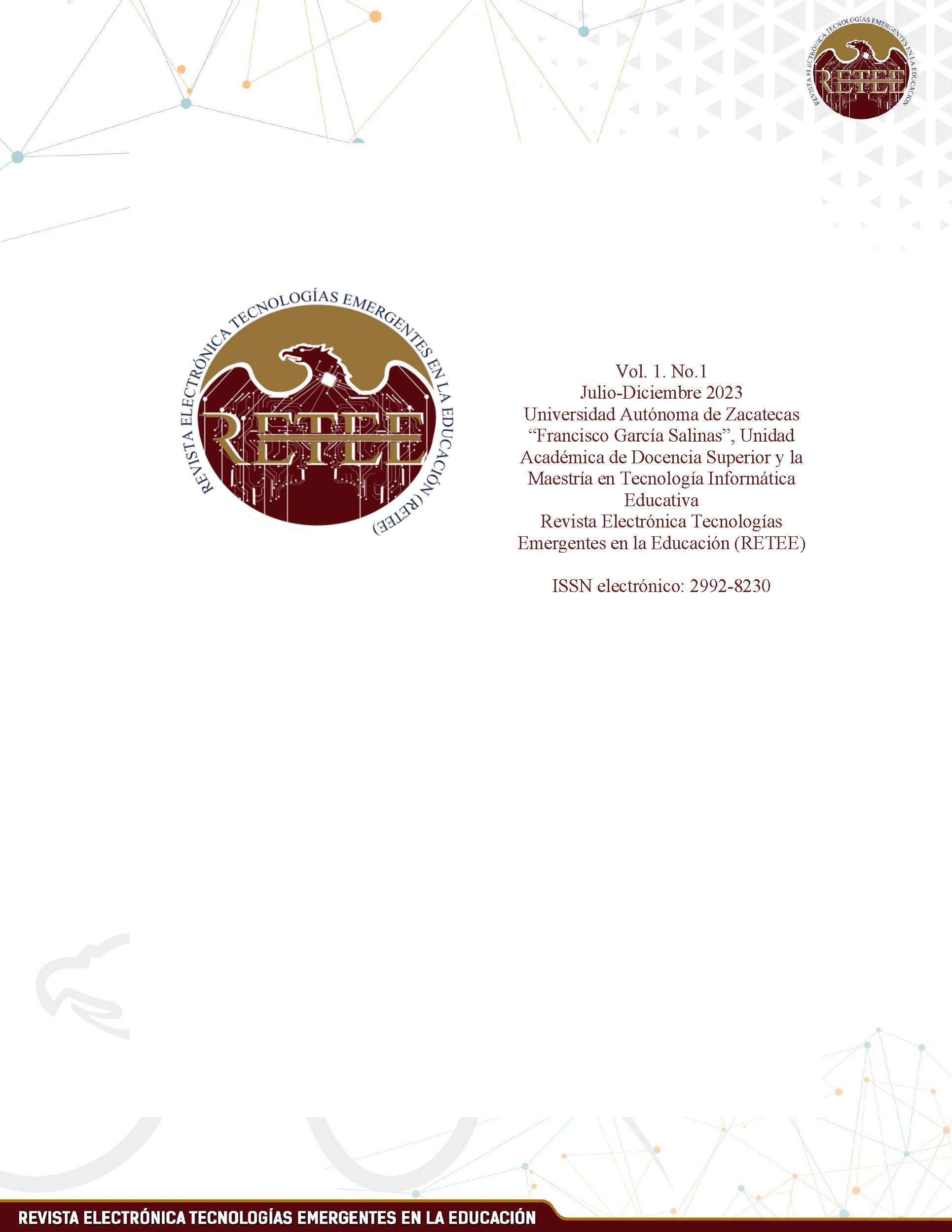Analysis of ICT use during the pandemic among pupils
Published 2023-11-22
Keywords
- Pandemic,
- skills,
- education,
- ICT,
- computing
Copyright (c) 2023 Revista Electrónica Tecnologías Emergentes en la Educación

This work is licensed under a Creative Commons Attribution 4.0 International License.
How to Cite
Abstract
The new COVID-19 virus is a disease infection that unleashes a global pandemic in mid-May 2020, which presents a mandatory social distancing and the impossibility of being a group of people in the same place, consequently, the student body is forced to adapt to non-presential means to continue with the practice of teaching, thus adopting the use of digital platforms and the use of information and communication technologies (ICT). The main objective of the present research is to show the difficulties and technological skills of students, their problems, needs and the adjustments that have had to be carried out throughout these semesters of online classes at the higher education level, specifically in the Academic Unit of Biological Sciences (UACB) of the Autonomous University of Zacatecas (UAZ). The advantages and disadvantages in their education were identified, analysing through structured surveys the acquisition of knowledge in the area of computer science and digital skills. Since this is a unit where there are not only theoretical classes, but also practical ones, it is expected to know in broad terms the contrasts and educational shortages of this small sector of the student population, as well as the possible side effects that will have long-term consequences through a statistical program performing an exploratory analysis with structured surveys, using cross tables and factor analysis.
Downloads
References
- Cardini, A., Bergamaschi, A., D’Alessandre, V., Torre, E., y Ollivier, A. (2020). Educar en pandemia: entre el aislamiento y la distancia social.Https://www.cippec.org/wp-content/uploads/2020/05/Cardini-dalessandre-y-Torre-mayo-de-2020-Educar-en-tiempos-de-pandemia-WEB.pdfCEPAL (2020). “Pandemia del COVID-19 llevará a la mayor contracción de la actividad económica en la historia de la región: caerá -5,3% en 2020”, 21 de abril 2020 [en línea] https://www.cepal.org/es/comunicados/ pandemia-covid-19-llevara-la-mayor-contraccion-la-actividad-economica-la-historia-la.CEPAL (2020). La educación en tiempos de la pandemia de COVID-19. Https://www.cepal.org/es/publicaciones/45904-la-educacion-tiempos-la-pandemia-covid-19CEPAL-UNESCO (2020). La educación en tiempos de la pandemia de COVID-19. Repositorio. https://repositorio.cepal.org/bitstream/handle/11362/45904/1/S2000510_es.pdfFernández, C., Govea, M. & Belloso, O. (2002). La universidad virtual en Venezuela. Un caso de estudio.Revista de Ciencias Sociales (Ve),8(1), 170-180.Human Rights Watch (2021). El grave impacto de la pandemia en la educación mundial. HRW. https://www.hrw.org/es/news/2021/05/16/el-grave-impacto-de-la-pandemia-en-la-educacion-mundialIisue (2020). Educación y pandemia. Una visión académica.México, UNAM https://www.iisue.unam.mx/investigacion/textos/educacion_pandemia.pdfINEE (2019).Panorama educativo de México: Indicadores del Sistema Educativo Nacional. México: INEE.INEGI (2018).Encuesta Nacional sobre la Disponibilidad y uso de TIC en hogares.México: INEGI. Recuperado dehttps://www.inegi.org.mx/temas/ticshogares/Maneiro, S. (2020). ¿Cómo prepararse para la reapertura? Estas son las recomendaciones del IESALC para planificar la transición hacia la nueva normalidad.Consultado el 30 de junio de 2020, enhttp://www.iesalc.unesco.org/2020/06/18/comoprepararse-para-
- la-reapertura-estas-son-las-recomendaciones-del-iesalc-para-planificar-latransicion-hacia-la-nueva-normalidad[Links]ONU (2020) Informe de políticas: La educación durante la COVID-19 y después de ella.Organización Mundial de la Salud (2020).Coronavirus causante del síndrome respiratorio de Oriente Medio (MERS-cov).Recuperado de https://www.who.int/es/news-room/fact-sheets/detail/middle-east-respiratory-syndrome-coronavirus-(mers-cov)Prensky, M. (2001). Digital natives, digital inmigrants.On the Horizon, vol. 9, núm.5.Prensky, M. (2010). Nativos e Inmigrantes Digitales.[PDF] https://marcprensky.com/writing/Prensky-NATIVOS%20E%20INMIGRANTES%20DIGITALES%20(SEK).pdfSilvio, J. (2003). Tendencias de la educación superior virtual en América Latina y El Caribe.En RAMA, C. (Ed.). La educación superior virtual en América Latina y El Caribe. Recuperado el 5 de mayo del 2021, de http://www.iesalc.unesco.org.ve/dmdocuments/biblioteca/libros/educvirtual_ALC.pdfUNESCO (2016).Informe de resultados TERCE: factores asociados, Santiago, Oficina Regional de Educación para América Latina y el Caribe(OREALC/UNESCO Santiago).UNESCO (2020).“Nuevas publicaciones cubanas para enfrentar efectos de la COVID-19 sobre la educación”. Oficina de la UNESCO en La Habana [en línea] https://es.unesco.org/news/nuevas-publicaciones-cubanas-enfrentar-efectoscovid-19-educacion [fecha de consulta: 22 de febrero del 2021].UNESCO (2020b). Informe de políticas: La educación durante la COVID-19 y después de ella.Recuperado el 7 de mayo del 2021 de https://www.un.org/sites/un2.un.org/files/policy_brief_-_education_during_covid-19_and_beyond_spanish.pdfUnigarro, M. (2004). Educación virtual: encuentro formativo en el ciberespacio. Bucaramanga: UNAB.
- McAnally, S. y Organista, J. (2007). La educación en línea y la capacidad de innovación y cambio de las instituciones de educación. https://www.redalyc.org/pdf/688/68800707.pdf


